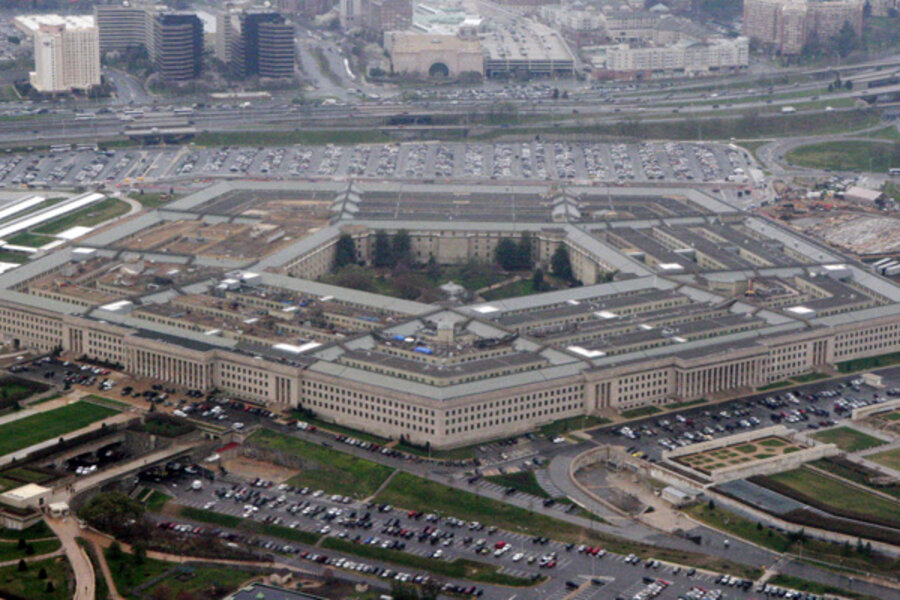Mysteries abound in shootings of D.C.-area military buildings
Loading...
| Washington
It is a mystery that is vexing – and troubling – security officials at the Pentagon, local law enforcement, and the Federal Bureau of Investigation’s Joint Terrorism Task Force: What is motivating someone to shoot at US military buildings?
Between five and seven shots from what now appears to be a high-velocity rifle were fired at the Pentagon on Oct. 19, shattering but not penetrating the windows there.
Officers on duty in a Pentagon parking lot heard gunfire about 5 a.m., and reported it to the Pentagon command center. Because a major highway runs past the parking lot, investigators shut it down to look for evidence, including bullet shell casings, causing traffic jams for much of the morning in Washington, D.C., earlier this month.
At the time, Steven Calvery, director of the Pentagon Force Protection Agency, said the attack appeared to be random. The Pentagon, as a member of the FBI’s Joint Terrorism Task Force, was anxious to partner up on the investigation.
“It’s a way of sharing resources,” says Pentagon Force Protection Agency spokesman Chris Layman. “It’s not because we think this person is a part of a terrorist group.”
There are few clues about the shooter.
It was known at the time of the Pentagon shooting that two days earlier a shooter had targeted the National Museum of the Marine Corps in Triangle, Va. The events did not appear to be linked, said Pentagon spokesmen, but the FBI examined the ballistics, and Pentagon security forces began poring over surveillance video “for any possible leads,” Mr. Layman says.
The ballistics investigation found that a single weapon was used in both incidents, and the FBI is now conducting further investigations, spurred by yet another attack this week on a Marine Corps recruiting station in Chantilly, Va. Chantilly and Triangle are 32 miles apart; likewise, Triangle and the Pentagon are 32 miles apart.
Those ballistics tests aren’t back yet, but Pentagon officials are bracing for yet another link to the same gunner.
Whether that person is a disgruntled former US marine or a would-be terrorist remains unknown, and Pentagon spokesman aren’t speculating.
Officials note, however, that all three shootings have occurred either overnight or early in the morning, when a shooter would likely not expect people to be around. No one has been injured in any of the shootings.
“It makes it more likely that someone’s not trying to hurt people, unlike the Washington sniper [who struck during three weeks in 2002] – that person was clearly about trying to cause death and injury to people,” says Barbara Van Dahlen, a clinical psychologist who founded Give an Hour, a national network of mental health professionals who are providing free counseling to US troops and their families. She speculates it is likely “a statement from somebody who is unstable,” rather than a terrorist.
But precisely what message the shooter intends to send remains unclear. “Unlike anthrax, where there were letters that allowed us to at least have some information about what is the gripe – or the delusion – we don’t have it in this case. So it’s hard to know what’s going on with this person,” says Dr. Van Dahlen.
In the meantime, Pentagon forces are taking precautions – specifically, bolstering security in advance of Sunday’s Marine Corps Marathon held in the D.C. area. One of the largest in the country, the event attracts some 30,000 runners each year. It is also a Marine event – and Marine buildings appear to be the primary targets of the shooter.
Pentagon officials emphasize that there has been no specific threat. “We’re adding some additional security that really is a precautionary measure,” says Layman. “We take all these events seriously and want to make sure it’s a safe and secure event.”





